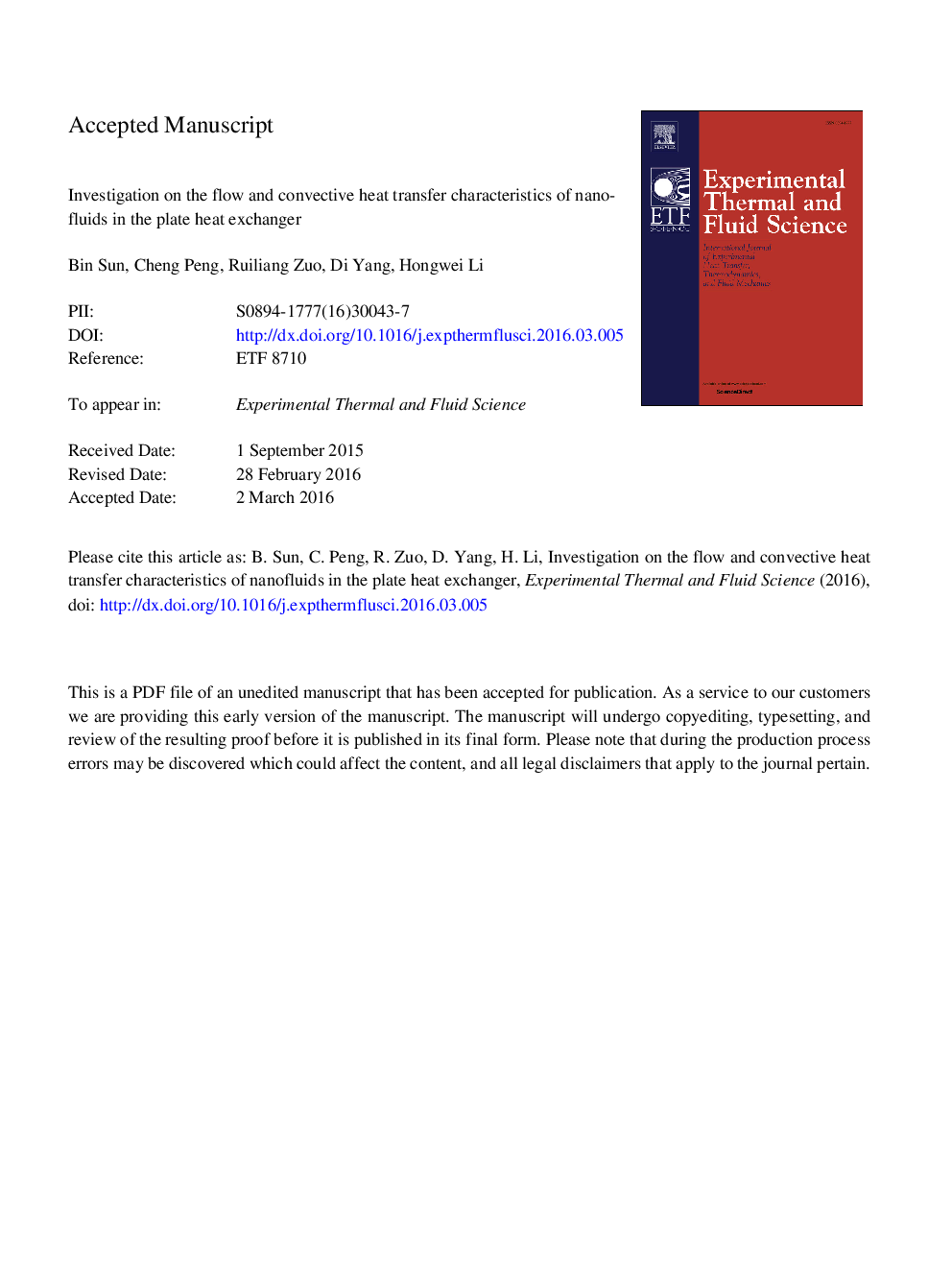| Article ID | Journal | Published Year | Pages | File Type |
|---|---|---|---|---|
| 7051994 | Experimental Thermal and Fluid Science | 2016 | 32 Pages |
Abstract
The researchers used nanoparticles (Cu, Fe2O3 and Al2O3) with an average particle size of 50Â nm to prepare nanofluids with mass fractions at 0.1%, 0.3%, and 0.5%. Dispersants such as sodium dodecyl benzene sulfonate (SDBS) were added at various concentrations to improve the stability of the nanofluids. The flow and convective heat transfer characteristics of the nanofluids inside a plate heat exchanger were analyzed. The dispersants significantly improved the stability of the nanofluids. The results demonstrate that, at the same Reynolds number, the overall heat transfer coefficient and resistance coefficient are enhanced, compared to deionized water, with the addition of nanoparticles. Further, the overall heat transfer coefficient was improved significantly with the increase of the mass fraction of nanoparticles. However, the resistance coefficient did not significantly increase. Different nanoparticles (Cu, Fe2O3 and Al2O3) lead to different consequences.
Related Topics
Physical Sciences and Engineering
Chemical Engineering
Fluid Flow and Transfer Processes
Authors
Bin Sun, Cheng Peng, Ruiliang Zuo, Di Yang, Hongwei Li,
